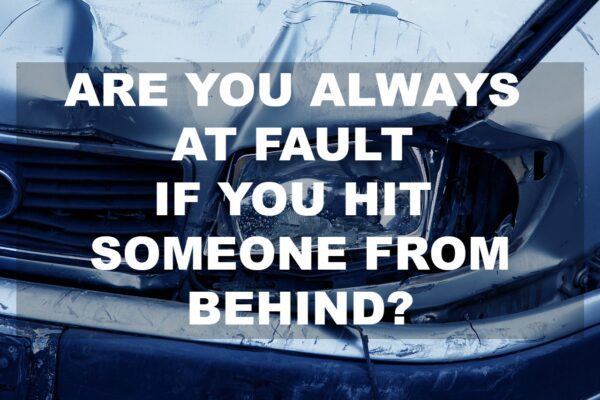
In an era of cell phones, text messaging and distracted driving, rear-end collision injuries have become all too common. When such an accident does happen, determining fault in rear-end collisions may seem like an open and shut case. Though there are a handful of exceptions, in general, the presumption is that the driver that strikes the back end of another car is at fault in a rear-end collision. In such instances, the driver who rear-ends another car will be the party liable for the damage caused in the collision. However, there are circumstances when the driver of the car that rear-ends another vehicle may not be at fault.
Is Maine a “Fault” Car Insurance State?
If involved in a rear-end collision, it’s important to know the law. In Maine, if you are in a car accident, the party that caused the accident is held liable. That person is considered at-fault and must pay for the cost of damages and medical expenses via the liability coverage of that policyholder’s car insurance. Therefore, with regards to a rear-end collision, fault must be determined to be awarded compensation for damages and injuries in Maine.
Who is at Fault in a Rear End Collison?
For rear-end collisions, fault can be determined by the driver that was most likely able to prevent the accident from happening is likely determined to be at fault. Conventional wisdom holds that the driver of the rear car is most capable of preventing an accident. That driver has a broader view of what is in front of him or her and is in the best position to avoid an accident. It’s worth repeating that a safe driving distance should be established at all times. One of the first questions asked in determining fault is the vehicle that rear-ended another at a safe driving distance? In order to react to a quick stop or slow down, the driver of a vehicle following another should be at a distance to see beyond that vehicle ahead and be in a position to avoid an accident.
That said, there are several challenges to conventional wisdom when it comes to determining fault in a rear-end collision.
- One good way to determine fault is in who strikes whom? If someone puts their car into reverse at a stop light to change lanes, but fails to notice the driver behind them and strikes it, that driver is liable.
- Similarly, if a car backing out of a driveway strikes a car coming down the street, the driver of the car backing out would be at fault.
Who is at Fault in a Multicar Rear End Accident?
Multi-car rear-end collisions are another instance where fault does not follow conventional wisdom. Take two cars are stopped at a red light. A third car approaches the light but fails to stop in time and rear-ends the second car which strikes the first car. Though the second car rear-ended the first car, it was caused by the third. Therefore, the car that failed to stop at the red light, the third car, would be at fault and held liable for all damages.
Other circumstances include when a lead driver makes inexplicable sudden stops or erratic moves from lane to lane without signaling or if visibility suddenly becomes limited because of smoke, fog or severe weather conditions. If the rear car driver is exercising reasonable caution, under such circumstances that a rear-end collision is unavoidable, then mitigation of liability may be possible.
What to Do If You’ve Been Injured in a Rear End Collision
In all cases, if you have been injured in a rear-end collision, seek medical attention immediately after. Some may not experience any pain from rear-end collision injuries right away. Symptoms from rear-end collision injuries like whiplash may not manifest for hours or days, and sometimes weeks. Whiplash is often cited as one of the more common injuries sustained in rear-end collisions. However, rear-end collision injuries can also affect the back and spine, head, wrists, and arms, and even cause seat belt bruising and lacerations.
If you have been a victim of a rear-end collision or facing liability for rear-ending another car, you would be well served to seek expert advice from a car accident lawyer. The law firm of Hardy, Wolf & Downing has reputable auto accident injury attorneys that will not only fight for you but represent you in court. They can help analyze the facts of the accident and help you with your case, especially in cases where fault remains to be determined. Though it is often presumed, if you hit someone from behind it may not be your fault. There are exceptions. Let Hardy, Wolf & Downing help you navigate the legal proceedings, extensive paperwork and red tape that may be necessary for determining fault after an accident.

